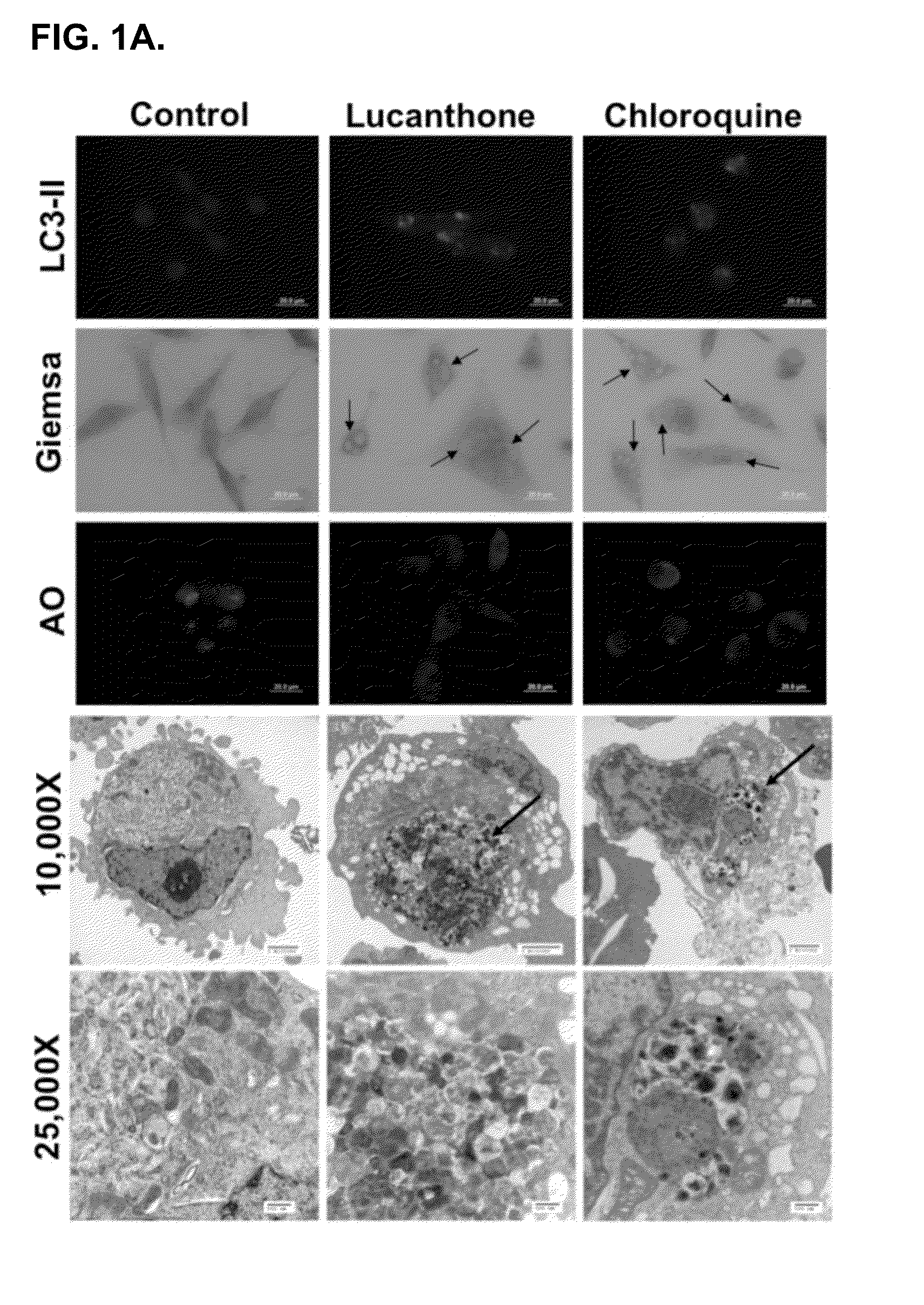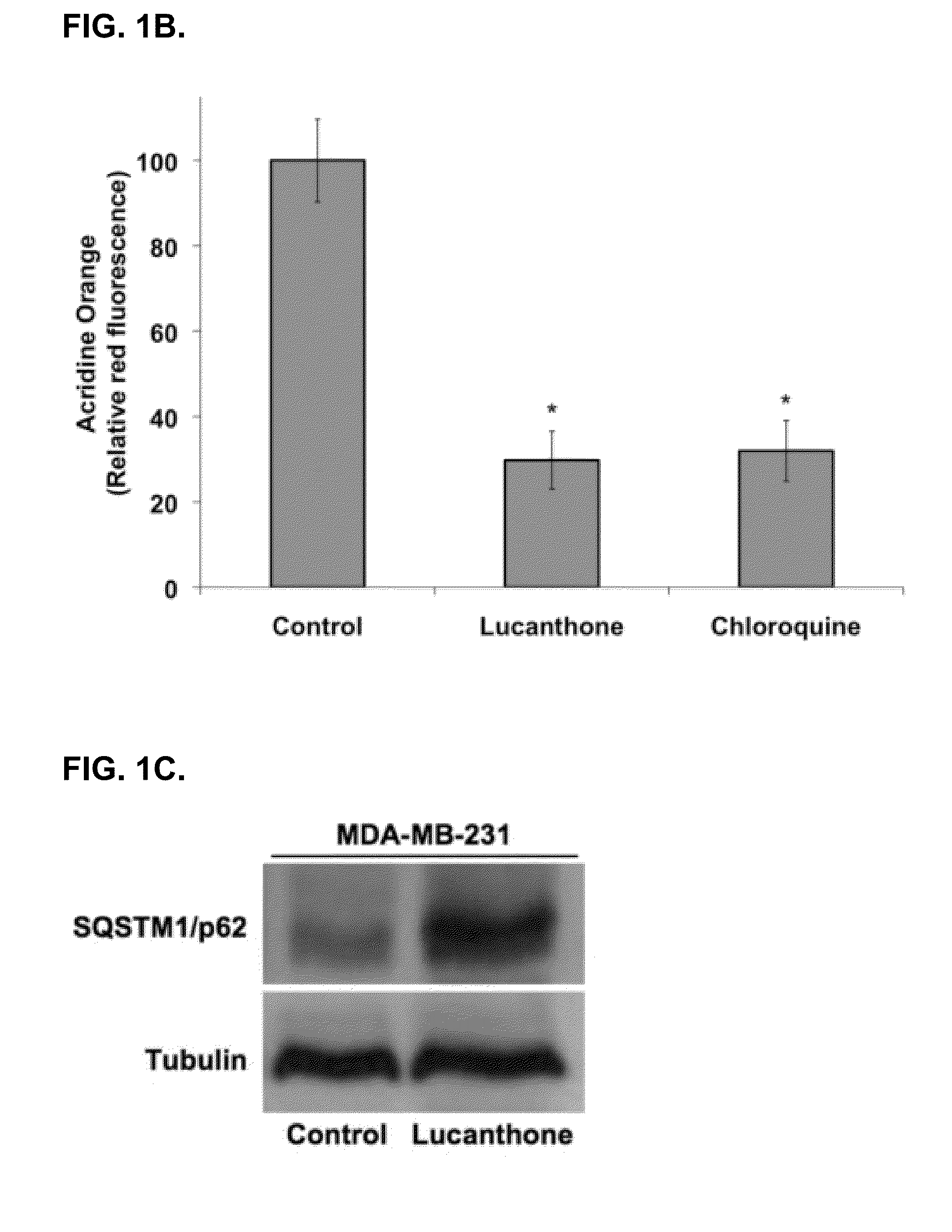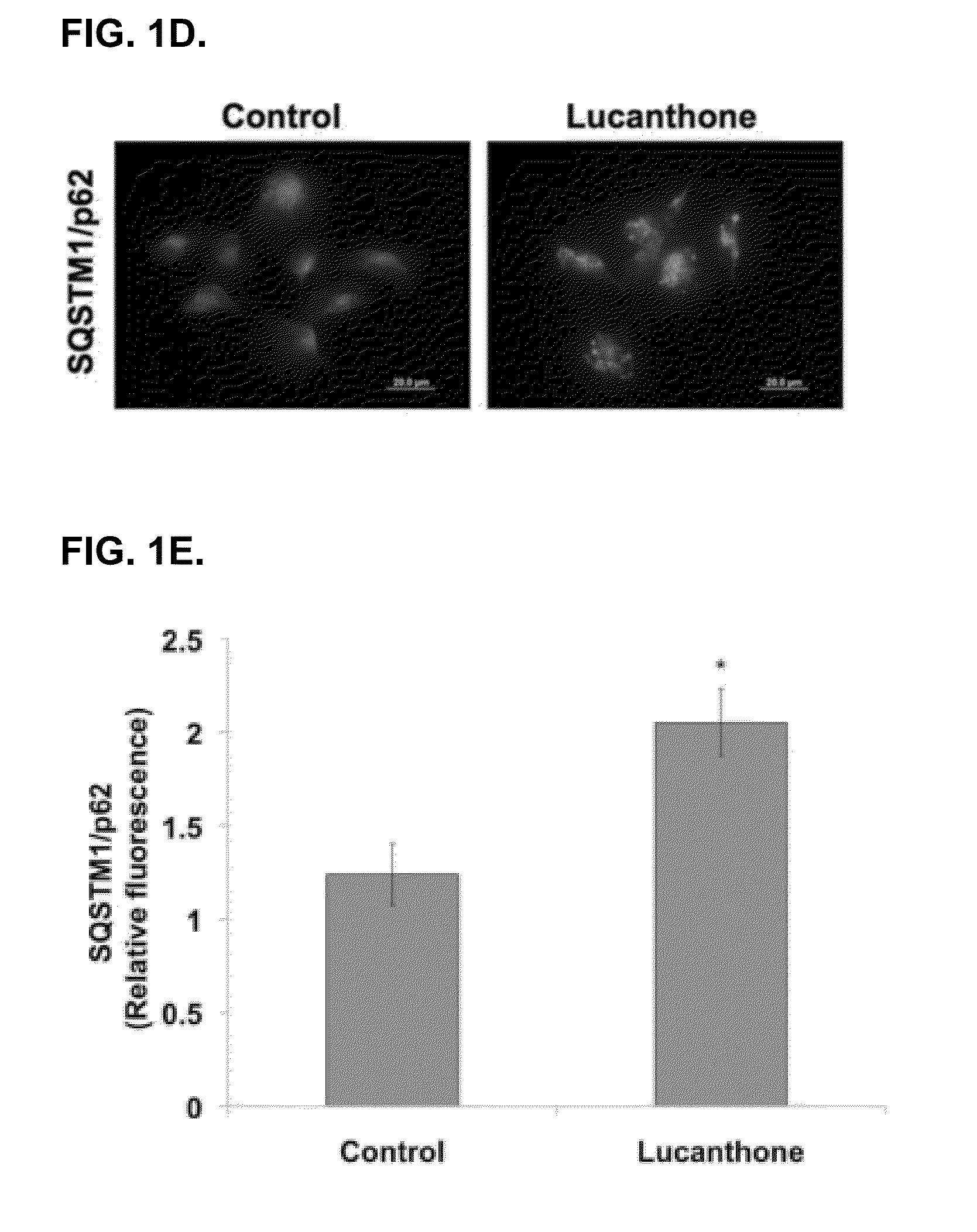Thioxanthone-based autophagy inhibitor therapies to treat cancer
a technology of thioxanthone and autophagy, which is applied in the direction of biocide, drug composition, antibody medical ingredients, etc., can solve the problems of limited effectiveness of local surgical treatment, limited effectiveness of chemotherapy and radiotherapy, and limited success of current approaches to treating cancer. , to achieve the effect of reducing a symptom, reducing a symptom, and reducing a symptom
- Summary
- Abstract
- Description
- Claims
- Application Information
AI Technical Summary
Benefits of technology
Problems solved by technology
Method used
Image
Examples
example 1
Lucanthone Inhibits Autophagic Degradation
[0125]Lucanthone induces lysosomal membrane permeabilization (LMP). Autophagy promotes cell survival and leads to drug resistance by enabling cancer cells to recycle cellular components to generate ATP. In accordance with this, inhibition of autophagy genetically or using compounds such as 3-MA enhances the activity of many anticancer agents. Lucanthone is an anti-schistome agent that based on its chemical structure, could disrupt lysosomal function and inhibit the last step in autophagic degradation. To test this hypothesis, breast cancer cells were treated with Lucanthone or chloroquine and assayed for the accumulation of LC3-II, an increase in vacuolization, and the appearance of lysosomal membrane permeabilization.
[0126]Accumulation of LC3-II was visualized by immunocytochemistry. Cells from a MDA-MB-231 breast cancer cell line were plated on chamber slides and allowed to attach overnight. Cells were then treated for 48 hours with 10 μM ...
example 2
Lucanthone is Cytotoxic to Breast Cancer Cells
[0133]Lysosomal membrane permeabilization and subsequent inhibition of autophagy had been reported to induce cell death in cancer cells. To investigate the anticancer activity of Lucanthone, cell viability was measured by MTT assay using a panel of seven breast cancer cell lines.
[0134]Cells from the breast cancer cell lines MDA-MB-231, HCC1954, BT-474, SKBR-3, MDA-MB-435, HCC1937, and BT-20 were seeded into 96-well microculture plates at 10,000 cells per well and allowed to attach for 24 hours. Cells were then treated with varying concentrations of Lucanthone or Chloroquine for 72 hours. Following drug treatment, 3-(4,5-dimethylthiazol-2-yl)-2,5,diphenyltetrazolium bromide (MTT) was added and cell viability was quantified using a BioTek (Winooski, Vt.) microplate reader. Pro-apoptotic effects following in vitro drug exposure were quantified by propidium iodide (PI) staining and fluorescence-activated cell sorting (FACS) analysis of sub-G...
example 3
Lucanthone Induces Cathepsin D Expression
[0136]Characterization of Lucanthone effects on cancer cells using Affymetrix expression arrays. To further characterize the effects of Lucanthone on breast cancer cells, expression profiling was performed on breast cancer cell lines. Cells from a MDA-MB-231 and a BT-20 breast cancer cell line were treated with 10 μM Lucanthone for 48 hours. Total RNA was isolated using the RNeasy Plus Mini Kit (Qiagen, Germantown, Md.) and treated with TURBO DNA-free™ Kit (Applied Biosystems, Foster City, Calif.). 300 ng of total RNA per sample was amplified and hybridized to GENECHIP® Human Gene 1.0 ST arrays (Affymetrix, Inc., Santa Clara, Calif.) according to the manufacturer's instructions. These arrays assay for the expression of about 28,869 well-annotated genes with 764,885 distinct probes. Affymetrix CEL files were imported into PARTEK® Genomics Suite™ 6.4 (Partek Inc., St. Louis, Mo.) using the default Partek normalization parameters and the robust ...
PUM
| Property | Measurement | Unit |
|---|---|---|
| time | aaaaa | aaaaa |
| lifetime risk | aaaaa | aaaaa |
| radiographic imaging | aaaaa | aaaaa |
Abstract
Description
Claims
Application Information
 Login to View More
Login to View More - R&D
- Intellectual Property
- Life Sciences
- Materials
- Tech Scout
- Unparalleled Data Quality
- Higher Quality Content
- 60% Fewer Hallucinations
Browse by: Latest US Patents, China's latest patents, Technical Efficacy Thesaurus, Application Domain, Technology Topic, Popular Technical Reports.
© 2025 PatSnap. All rights reserved.Legal|Privacy policy|Modern Slavery Act Transparency Statement|Sitemap|About US| Contact US: help@patsnap.com



